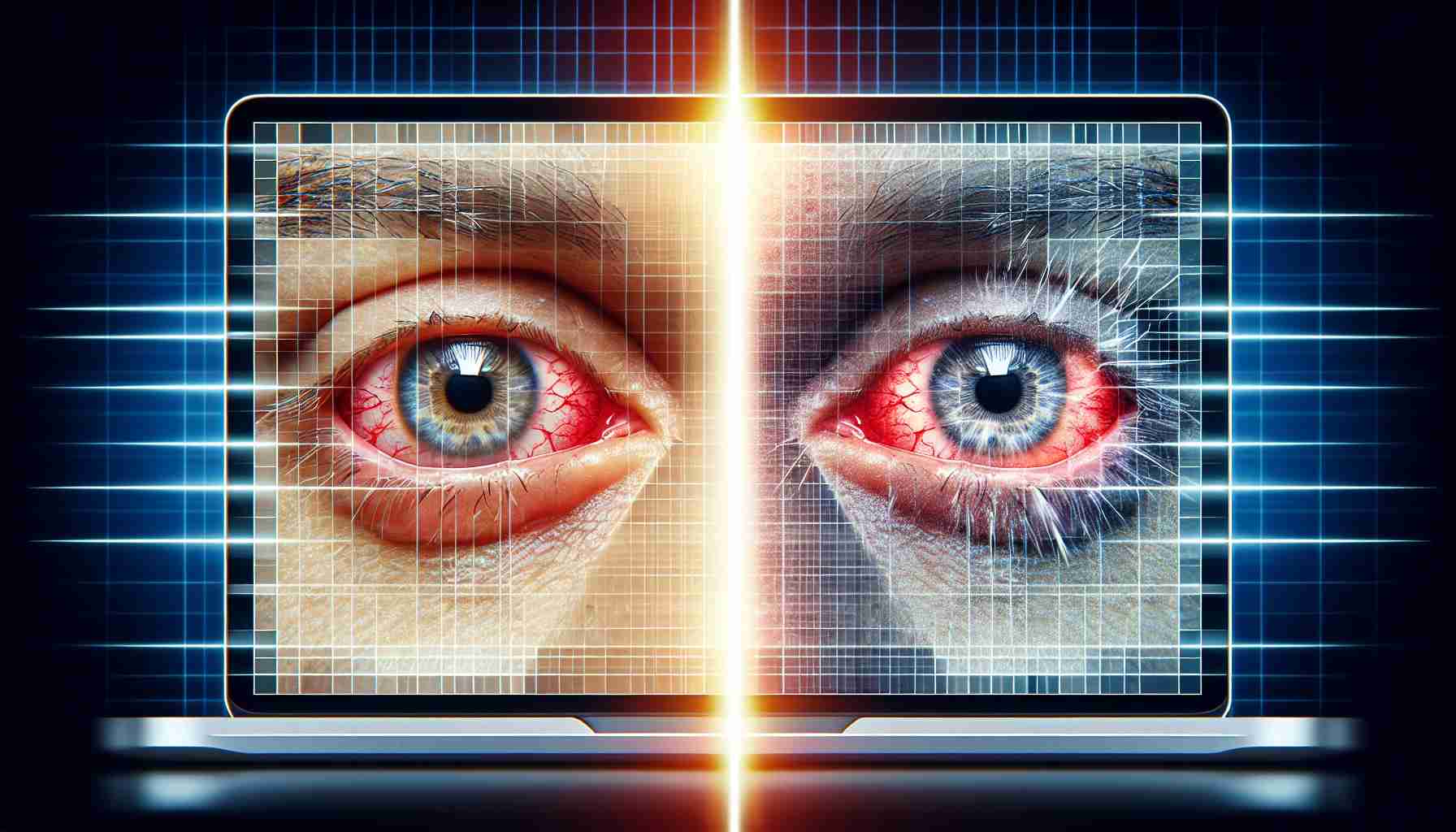A recent study from the Shanghai Eye Disease Prevention and Treatment Center has revealed alarming results regarding prolonged screen exposure. The research indicates that for every additional hour spent staring at screens, the aging of the retina can accelerate by approximately 32 days. This revelation has raised concerns among eye health professionals, who note that there is currently no consensus within the industry about the implications of these findings.
Eye specialists emphasize the potential harm of high-screen-brightness devices, particularly when used excessively. For individuals with existing myopia, extended use of smartphones, especially in dark environments, could lead to significant strain on the retina. This strain might result in severe complications, including retinal tears and hemorrhaging. Furthermore, older adults may experience worsening conditions related to presbyopia due to increased screen time.
It has been pointed out that using mobile devices in the dark poses the highest risk for eye health. The blue light emitted from screens can cause substantial irritation to the macula, which increases the likelihood of degenerative changes. For those who are predisposed to glaucoma, engaging with screens without adequate lighting can act as a triggering factor for the condition.
Given the prevalence of mobile device usage, it’s crucial to consider the health implications of screen time. Regular breaks and appropriate lighting conditions can help mitigate these risks and protect eye health over the long term.
The growing reliance on digital devices has sparked significant discussion about the effects of prolonged screen time on eye health. With recent studies indicating a rise in screen use among all age groups—especially during the pandemic—understanding the full impact on ocular wellness is more vital than ever.
What Are the Signs of Digital Eye Strain?
Digital Eye Strain (DES), also known as computer vision syndrome, commonly presents with symptoms such as dry eyes, blurred vision, and headaches. A report from the American Optometric Association highlights that nearly 60% of adults experience these symptoms after extended digital device use.
How Does Screen Time Affect Children Specifically?
Recent data indicates that children’s screen time has dramatically increased, with some spending upwards of 7 hours a day on screens. This excessive exposure can lead to an increase in myopia prevalence in children, as studies show a correlation between screen time and an increase in nearsightedness, particularly among those who use digital devices for gaming or educational purposes.
What Are the Key Challenges and Controversies?
One key challenge in the discussion of prolonged screen time effects is the varying opinions among health professionals. Some argue that the benefits of technology, like online learning resources, outweigh the potential risks. Additionally, the lack of standardized guidelines for optimal screen usage complicates the conversation about how to best protect eye health.
Advantages and Disadvantages of Screen Use
Advantages:
– Access to vast resources for education and information.
– Enhanced connectivity and social interaction.
– Tools for creativity and productivity through various applications.
Disadvantages:
– Increased risk of DES and other ocular health issues.
– Potential for negative impacts on mental health due to excessive device usage.
– Risk of developing poor posture and musculoskeletal issues due to prolonged sitting with screens.
How Can Individuals Mitigate Risks?
To minimize the negative effects of prolonged screen time, experts recommend the 20-20-20 rule: every 20 minutes, take a 20-second break to look at something 20 feet away. Regular eye checks, proper lighting during usage, and the use of blue light blocking glasses can also be advantageous in protecting eye health.
In conclusion, as screen time continues to rise in our digital age, staying informed about its impact on eye health becomes essential. By acknowledging the signs of digital eye strain and adopting proactive measures, individuals can safeguard their vision in an increasingly screen-centric world.
For more information on eye health and screen time recommendations, visit American Academy of Ophthalmology and American Optometric Association.























